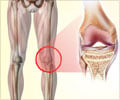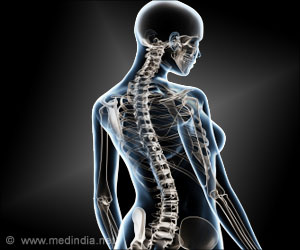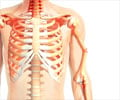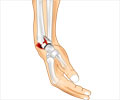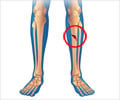Osteoporosis could weaken the bones and cause fractures. Romosozumab drug has been found to reduce the risk of spine fractures in postmenopausal osteoporosis.
- Osteoporosis is a disease that weakens the bone and causes fractures.
- A new drug called Romosozumab has found to be effective in treating postmenopausal osteoporosis.
- The drug has been found to reduce the risk of spine fractures in postmenopausal women with osteoporosis.
The research team had found that treatment for 12 months with the new class of drug could actually be associated with rapid and large reductions in the risk of vertebral fracture when compared to placebo.
Professor Piet Geusens, Maastricht University, The Netherlands, said, "These results support this new class of drug as a highly effective treatment for postmenopausal women with osteoporosis with established bone mineral density (BMD) deficit who are at increased risk of fracture."
"The rapid and large reduction in clinical vertebral fracture risk is an important and highly relevant clinical outcome," he added.
Fracture Study in Postmenopausal Women With Osteoporosis (FRAME)
The FRAME trial is an international randomized placebo controlled trial. Around 7,180 postmenopausal women with osteoporosis who were between 55-85 years of age were involved in the study.
This was confirmed by abnormally low bone density scores in the spine, hip and femoral neck. But however, they had no severe vertebral fracture.
Study Findings
The findings of the study after 12 months revealed that:
The effect of romosozumab drug on the vertebral fracture risk was rapid along with two additional vertebral fractures from a total of 16 such fractures in the romosozumab group during the last 6 months of the therapy.
The results collected from the trial mainly focused on the incidence of clinical vertebral fracture in women who developed back pain which was consistent with the diagnosis.
The monthly study visits in FRAME has enabled timely X-Ray confirmation of any type of suspected clinical vertebral fracture.
Vertebral Fracture in Women
Out of the 119 women who reported back pain for over 12 months, around 20 of them were diagnosed with new or worsening vertebral fracture.
In people who took romosozumab group, around 3 clinical vertebral fractures where identified when compared to 17 with placebo.
The risk of clinical vertebral fracture in romosozumab group was 83% lower when compared to placebo.
When comparing with clinical vertebral fracture vs. no clinical vertebral fracture, the measurement of Bone Mineral Density has shown more severe osteoporosis. However, when comparing the other baseline characteristics both of them reported back pain in both treatment groups.
Romosozumab Drug
Romosozumab drug is a monoclonal antibody that could bind and inhibit sclerostin (a glycoprotein produced by bone cells). The action has been found to have a dual effect of increasing bone formation and decreasing bone resorption could lead to significant increase in bone mineral density.
However, previous studies have shown that romosozumab when administered subcutaneously, at monthly intervals for 12 months could result in both trabecular and cortical compartments of the spine and hip region.
Postmenopausal Osteoporosis
It is considered as a serious health concern due to its high prevalence in the world. Around 30% of the women have osteoporosis in Europe and the U.S.
Osteoporosis is a disease that weakens the bones and increases the risk of sudden and unexpected fractures. There is a direct relationship between the development of osteoporosis and menopause due to lack of estrogen.
Symptoms are not well known because bone loss occurs without any symptoms.
While around 40% of the people will have to sustain one or more fragility fractures in their lifetime.
Postmenopausal fractures often occur in the hip, spine and the wrist. Of which, fractures in the spine and hip are most common. Spinal fractures could result in intense back pain and deformity.
References
- Menopause & Osteoporosis - (https://my.clevelandclinic.org/health/articles/menopause-and-osteoporosis)
Source-Medindia


